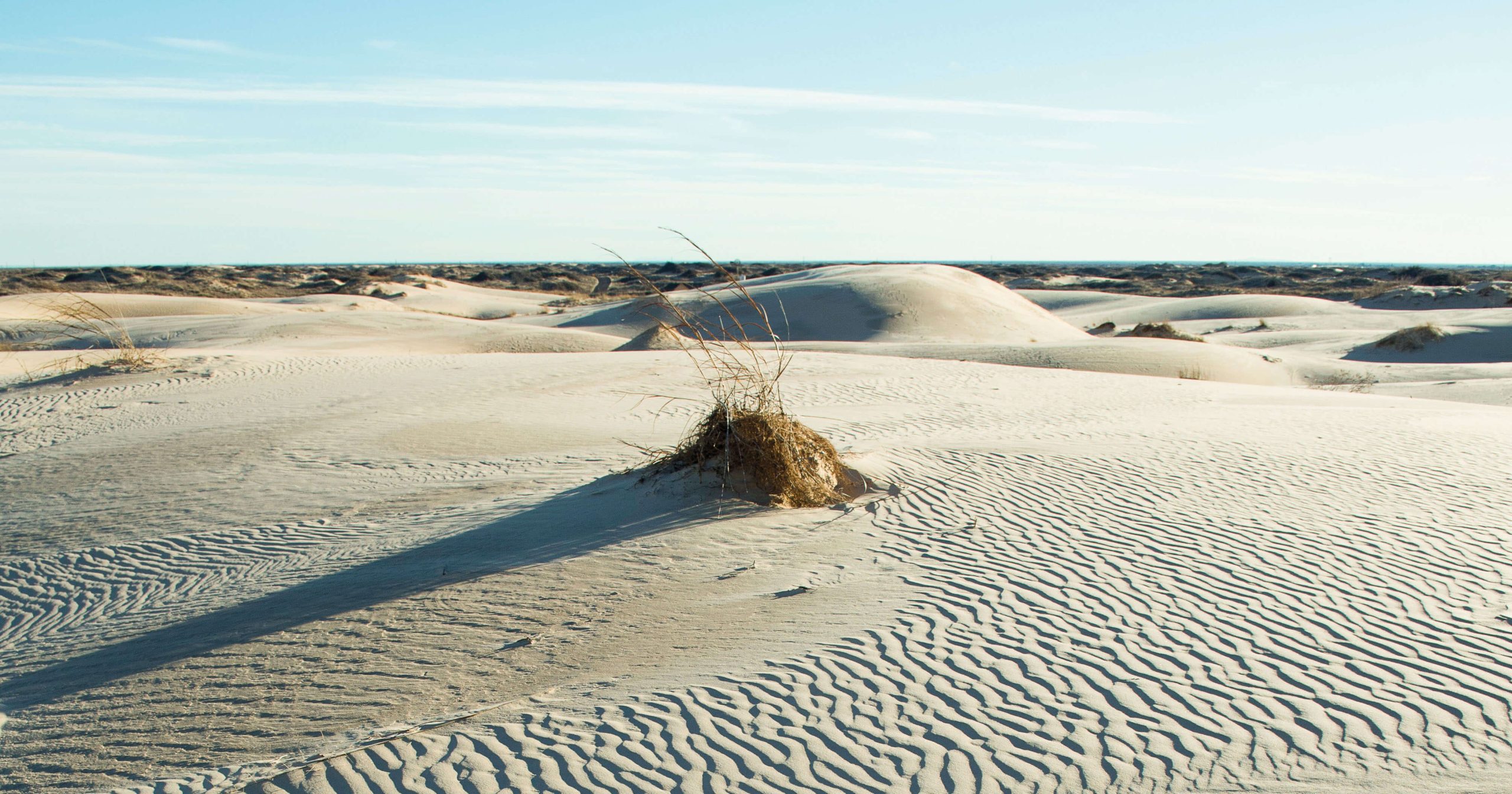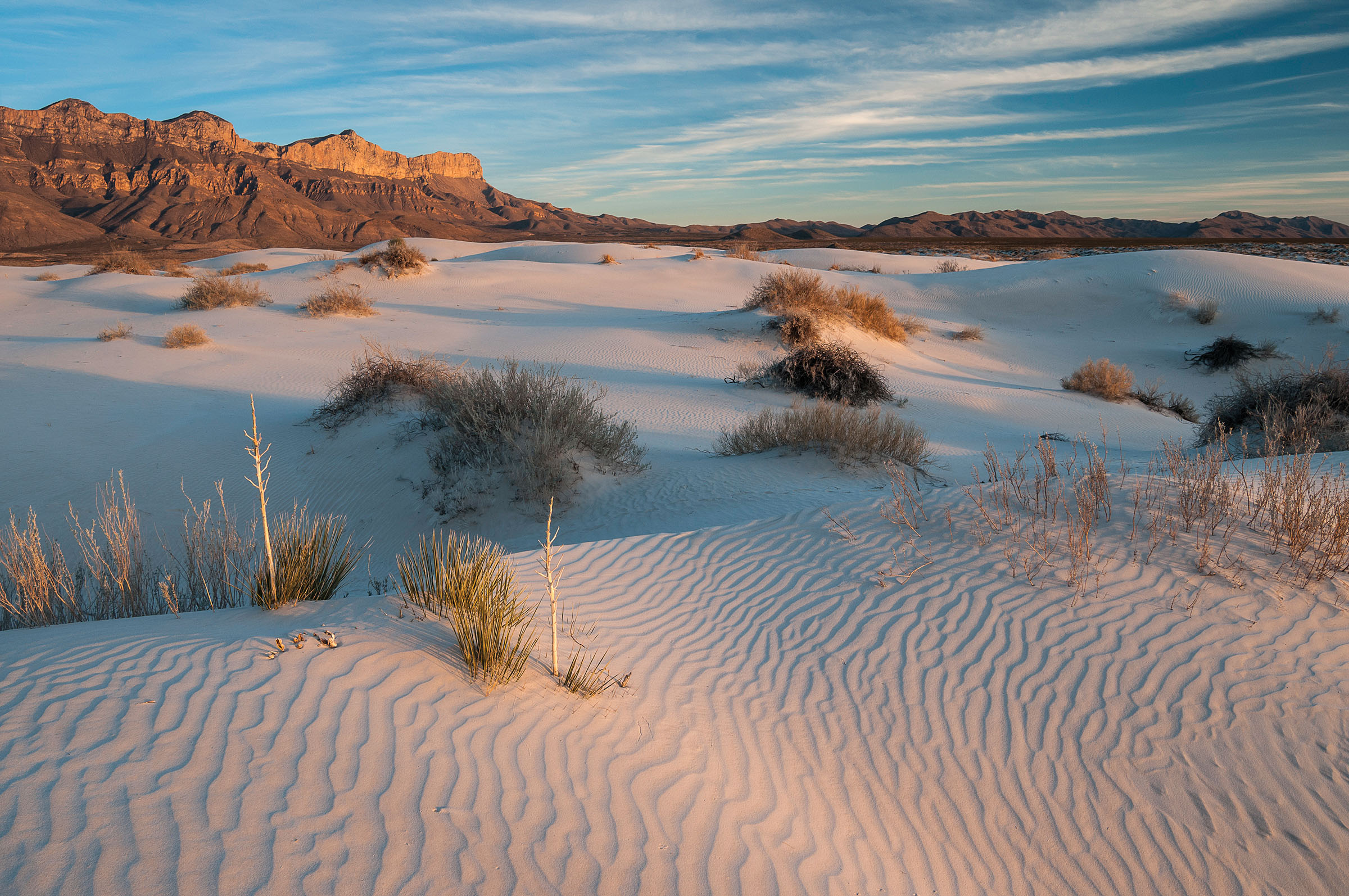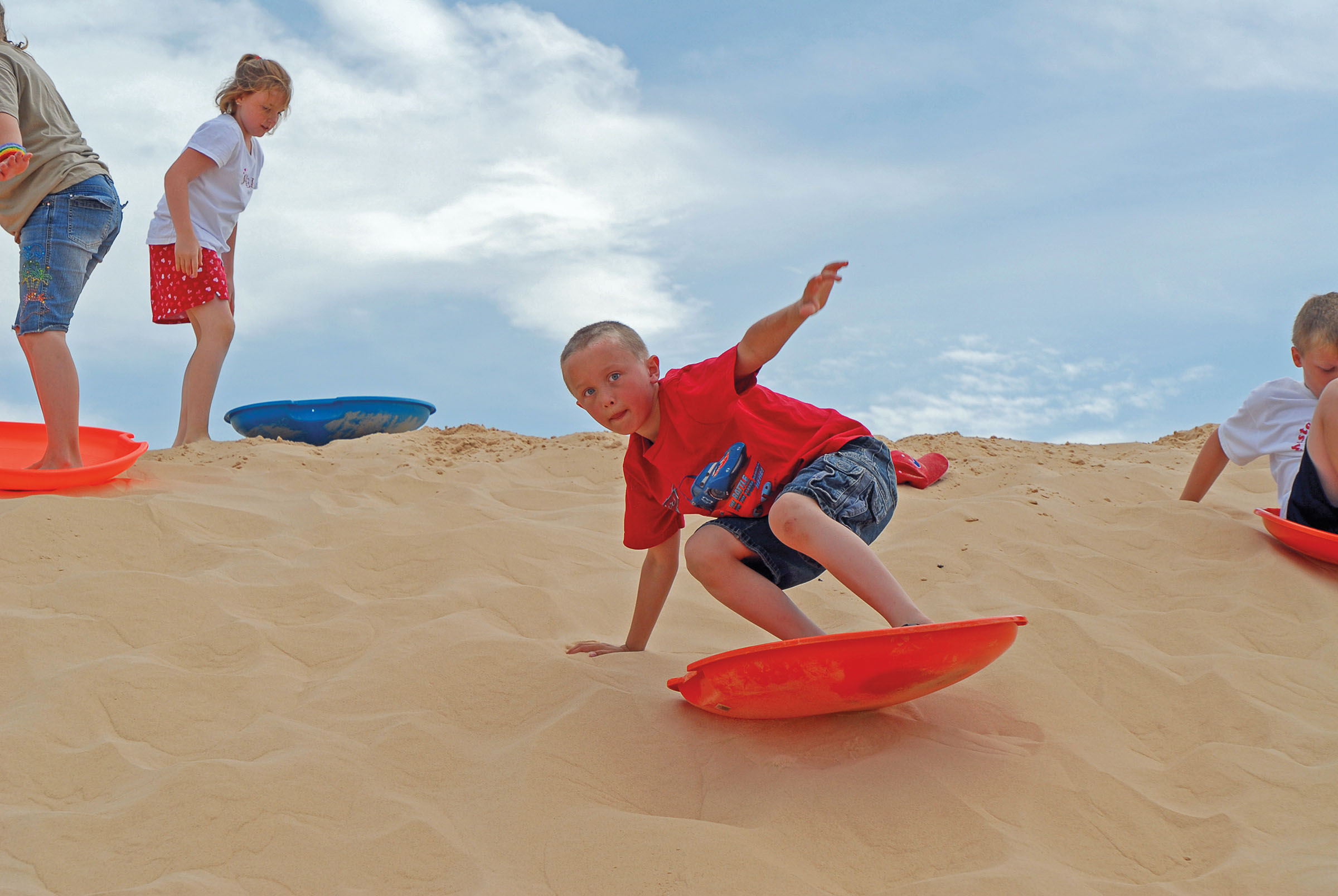Lines in the Sand
Sled down the dunes at Monahans Sandhills State Park
By Melissa Gaskill

If spring and summer encourage trips to the Gulf Coast, fall and winter facilitate a different sandy adventure: dune sledding. Since Texas isn’t known for mounds of fresh-fallen snow, its inland sand dunes are the best places in the state for a sledding trip.
Monahans Sandhills State Park, located in the West Texas town of Monahans, contains almost 4,000 acres of a massive dune field that stretches into New Mexico, measuring 150 miles long and 22 miles wide. Many of the dunes remain active, moved and piled high by winds, creating slopes perfect for sliding down. The park headquarters rents sand discs and sells disc wax, which speeds up the sled by reducing its friction with the sand. You can also bring your own sledding equipment; some people even opt for skis or snowboards. Sliding is best in the morning after a good rain the night before, and in fall or winter when winds are lighter.
“The cool thing about active dunes is that the wind is constantly changing them,” says Butch Street, interim park superintendent. “Each time you come is different.”

Where’s the Beach?
These national parks offer their own sand dunes sans water.
Salt Basin Dunes, Guadalupe Mountains National Park
During the Pleistocene Epoch, which started 1.8 million and ended 11,700 years ago, a broad, shallow lake covered part of this area. The climate became drier as the lake vanished, and wind began rearranging sediments. Today, winds carry grains of gypsum from the lake bed to the western edge of the park, creating bright white dunes that cover about 2,000 acres and range from 3 to 60 feet high. Salt Basin Dunes Trail is 3 to 4 miles round-trip. nps.gov/gumo
Boquillas Canyon Trail, Big Bend National Park
This 1.5-mile out-and-back trail climbs to a bluff overlooking the Rio Grande, then drops to the river and a huge sand dune against the canyon wall. Climb, play, and slide on its sandy slopes. nps.gov/places/boquillas-canyon-trail.htm
3,840
Acreage of dunes at Monahans Sandhills State Park
70 feet
Height of tallest dunes recorded in Monahans Sandhills State Park
12,000
Years the sandhills have been inhabited by humans

Sand Man
Butch Street, the interim superintendent of Monahans Sandhills State Park, shares tips and tricks for dune sledding
When did sand dune sliding originate at the park?
People have been in this area as far back as 12,000 years ago, and I imagine their children played on and slid down the dunes. The park officially opened in 1957, but even before that, people were stopping here to stretch their legs and slide down the sand.
What do people use to slide?
A lot of people use plastic snow sleds. I’ve seen smaller children on galvanized trash can lids with the handle taken off. Cardboard or even a sheet of plywood works. A friend and I once skied the dunes with our snow skis. There are sandboards, similar to snowboards, that you stand on.
What are your tips for the best ride?
Find a steep slope with no vegetation, especially not at the bottom. The higher and steeper faces of the dunes can be kind of intimidating the first time, but there’s enough friction in the sand that it’s not like sliding down ice or snow. Lean back slightly, close your mouth, and enjoy the ride.
Any don’ts?
The biggest thing is to leave no trace, other than your slide marks, which the wind takes care of. Pack it in, pack it out, so people can enjoy the dunes for another 12,000 years.
The Science of Sand
Sand is formed when rocks are eroded by wind, rain, freezing and thawing, and tumbling around in streams or glaciers. Wind transports sand, and dunes form when the sand piles up in a particular spot. Wind moves up the face of the dune, carrying sand grains along with it. Once a grain reaches the top, it falls down the lee side and out of the influence of the wind, becoming part of the dune.
Sand is an important component in both construction and manufacturing, and there’s not enough of it to go around. “In fact, it is such a limited resource that illegal sand mining is becoming a major international problem,” says Chris Lowery, research associate at the University of Texas Institute for Geophysics. “We need to manage it so that we use it wisely.”
How to Slide:
Find a dune without vegetation or pavement
Start at the highest, steepest part of the dune
Sit down and push off
Lean back slightly and enjoy the ride








